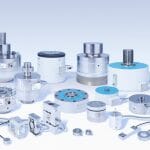The ongoing evolution of lasers, together with the lower cost of ownership, has seen the technology become the process of choice for a growing number of marking and engraving applications across many different industry sectors.
The power, precision and flexibility of lasers makes them ideal for Direct Part Marking on a wide range of metals, ranging from the softer precious metals used for jewellery right through to the high grade alloys commonly found in the aerospace and medical sectors.
In this article, TLM Laser director Andy Toms, discusses the different techniques used for laser marking metals and why the FOBA Laser technology distributed by the company in the UK and Ireland is becoming increasingly dominant in this area.
Manufacturers have always has a number of options for marking metal components and in the past dot-peen marking, hand engraving and acid etching were often the most widely used. Whilst these technologies are still current, and remain appropriate for certain applications, the capability of the laser to produce text, 1D & 2D codes, rastered graphics and precision surface textures at the highest levels of quality and consistency mean that lasers are becoming increasingly dominant in these applications.
The techniques used for marking metals using a laser vary depending upon the application and the final result required. Annealing marking is the process where an oxide layer is created on ferrous metals such as iron, steel, high-grade steel, and titanium through localised heating. In most cases, the oxide layer is black, but other annealing colours, such as yellow, red and green can be achieved. The final colour depends on the temperature of the heated layers. The surface of the material remains unchanged during annealing because nothing is removed from it; the colour change is achieved solely through localised heating.
Using this technique, the heat usually penetrates just 20 to 30 µm deep into the metal surface. This makes the marking non-abrasive, and another benefit is that the marking can be removed by re-heating (min 700°C for ferrous metals), something not possible when using traditional technologies.
Deep Engraving is the process where marks or engraving is achieved through repeated removal of material layers. This procedure involves layer-by-layer, laser-induced engraving deep into the material. Repeated removal is brought about through melting or vaporisation of the material as a result of the thermal laser energy. The depth of the engraving depends on the parameters that have been set. When using FOBA’s online deep engraving, the material removal (actual depth) is measured several times and compared with the target engraving depth during the engraving process. The remaining removal is recalculated, the number of layers still to be engraved is automatically adjusted and the subsequent layers are removed. The engraving depth is precisely controlled and executed down to just a few microns, enabling exact adherence to the specified relief height.
Another technique commonly used is Surface Structuring, where pre-defined micro-structures and textures are marked on to work piece surfaces using a laser system. This technique is often used on plastic injection mould tools and tools used for embossing. This can involve either direct material processing of the end product or the embossing tool or die. The process of surface texturing, which is used to apply structures, is very often used for the purpose of creating visual effects.
The non-contact nature of laser marking and engraving means that there are no tools to wear out or break and the consistency of the process means that the last laser mark produced will be of the same quality as the first, an essential attribute in high compliance industries such as medical device manufacturing.
Laser marking is also recognised for its durability, high-temperature resistance and even micro sized laser marks applied to different metal types resist extreme operating conditions, meaning that they will always be present for identification and traceability purposes.
Whether you are seeking to engrave a romantic message on to a Wedding ring or produce an indelible UDI code on to a medical device or surgical instrument, today the technology used is most likely to be a laser.
Bromsgrove based TLM Laser is the UK and Ireland distributor for FOBA Laser and offer a comprehensive range of laser marking and engraving machines and systems.
For further information, please contact:
Mr Andy Toms
Director
TLM Laser
2 Navigation Court
Harris Business Park
Stoke Prior
Bromsgrove
B60 4BD
Tel: +44(0) 845 260 2220
E-Mail: sales@tlm-laser.com
Web: www.tlm-laser.com






